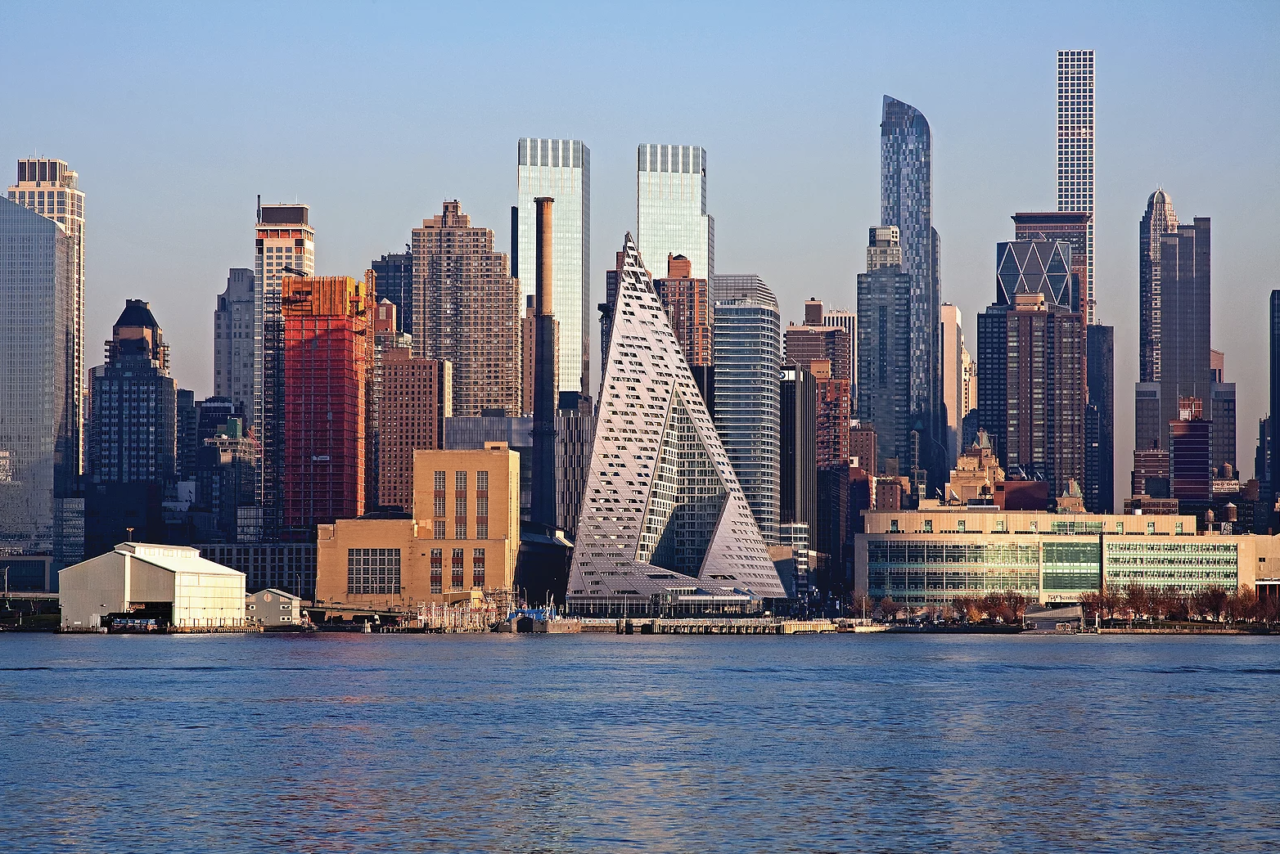- Introduction
- +Essays
- Editor's Note
- Zoning as Design
- Towards A City of Cities
- The Future of the Zoning Resolution
- Zoning and Design Visualization
- Working with the City
- A Revolutionary Approach to Zoning
- Zoning the Next 100 Years… Or At Least 50
- Vision and Legitimacy: The Planning Basis of Zoning
- Happy 100th Birthday, NYC Zoning Resolution!
- Reflections on the 100th Anniversary of the NYC Zoning Resolution
- Regulating the Good You Can't Think Of
- Zoning for the 21st Century Metropolis
- The Zoning Resolution: A Work in Progress
- Zoning for Tomorrow
- Zoning and Design: It’s Complicated
- What’s Old Is New
- Zoning – The First 100 Years
- One Hundred Years of Zoning
- 100 Years of Zoning
- Authors
- Related Links
- Events

In response to public pressure following construction of the Equitable Building, in 1916 New York City passed the Zoning Resolution to stop oversized buildings from preventing light and air from reaching the streets below. While perhaps not initially intended, the nation’s first zoning code would become a blueprint for urban development across the country and throughout the world. Since 1916, the zoning resolution has continually been fine-tuned to make it more versatile and responsive, to better address issues of neighborhood character and social equity, as well as to help promote strategic investment in the city’s future.
Beginning in the 1950s, The Durst Organization has partnered with the City of New York to foster equitable, sustainable, and impactful development to enhance the quality of life and economic opportunities for New Yorkers. Following the demolition of the Third Avenue Elevated train in 1955, The Durst Organization led efforts to rezone and transform Midtown East into an office corridor, and establish an entirely new business district that would help shape New York as a global capital of industry and culture in the post-war era.
In the 1980’s, The Durst Organization began to work with the city of New York in numerous rezoning initiatives to revitalize Times Square. During the decades-long process, The Durst Organization used zoning ordinances to develop a new commercial district, and reestablish Times Square as a not just a worldwide pinnacle of entertainment and tourism but a desirable headquaters for corporate office . These efforts have resulted in the construction of 4 Times Square, the first project of its size to adopt state-of-the-art standards for energy conservation, indoor air quality, recycling systems, and the use of sustainable manufacturing processes; and One Bryant Park, the first skyscraper in North America to achieve LEED Platinum certification. Today, Times Square is responsible for generating $110 billion in economic activity, though it comprises only 0.1% of New York City’s total land area. The district generates 11% of the city’s economic output and 10% of the city’s employment, and its economic impact rivals that of mid-sized American cities such as Portland, Oregon and Pittsburgh, Pennsylvania. Similarly, The Durst Organization was a leading partner in the rejuvenation of Bryant Park and continues to be a major supporter, supplying funding to privately manage the park, as well as encouraging performances and events.
One of New York’s newest and most innovative buildings, VIA 57 WEST was the result of over a decade of careful planning and coordination with the Department of City Planning. Previously zoned for only industrial use, The Durst Organization worked with the City to rezone the property in 2001 and 2012 to allow for commercial and limited residential uses. Durst collaborated with municipal, state, and national agencies to clean the site of contamination, improving the overall health of the neighborhood. The pioneering development, designed by Bjarke Ingels, is both architecturally innovative and environmentally sustainable.
Currently, The Durst Organization is working closely with the de Blasio administration on the Halletts Point development in Astoria. The 2.4 million-square-foot project will transform a stretch of the Queens waterfront into a thriving residential community with a supermarket, a vibrant mix of retail, an extended and enhanced waterfront esplanade, parklands and renovated playgrounds.
For the first time in history, more people will live in cities and urban areas than not, and the social and environmental implications of this transition to a predominantly urbanized world are enormous. Over the past century, New York has been the standard of vibrancy and progress that cities across the world have sought to emulate. With over 70 percent of the world population expected to be urban by 2050, it is now more important than ever that New York City and State Governments work with the development community to ensure that our City’s land-use policy can sustain our population growth, make New York verdant and livable and maintain our position as the cultural and economic capital of the world.
Douglas Durst is Chairman of the Durst Organization







